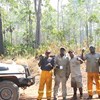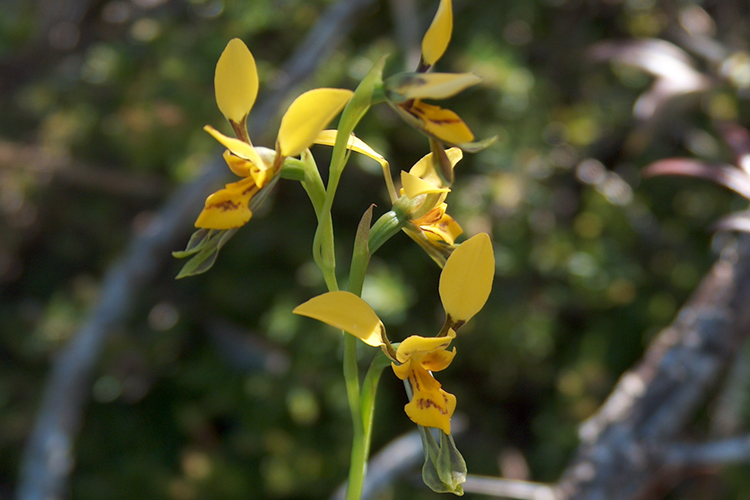
Working together to care for the Byron Bay orchid
Tuesday, 20 August 2019The Arakwal People of Byron Bay have recently undertaken their first cultural burn in over 30 years on the clay heaths of Arakwal National Park. They are also now more actively guiding decisions about the care of the rare Byron Bay orchid and its clay heath habitat, both of which are listed as Endangered under New South Wales environmental law. Cathy Robinson and Josie Carwardine from CSIRO and Norman Graham, an Arakwal and New South Wales National Parks and Wildlife Service Ranger, talk about their research collaboration, which is supporting Arakwal people to incorporate Indigenous knowledge and values into decision-making and evaluation for the orchid and its habitat.
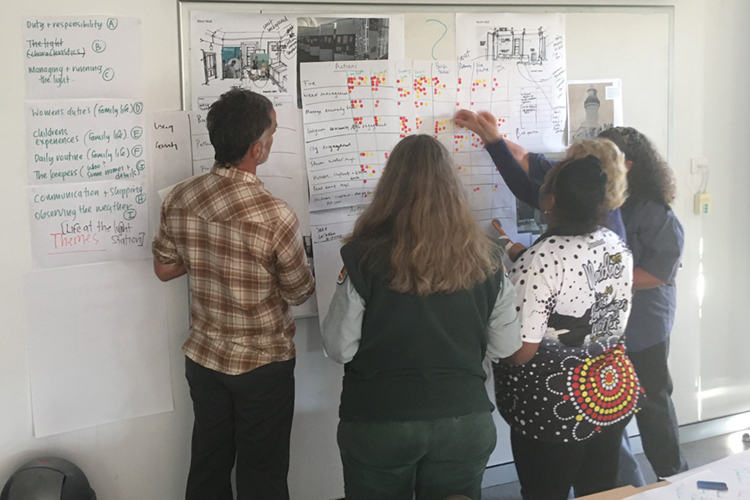
Working together to identify the key actions that would be needed to care for Byron Bay habitat.A cross-cultural approach. Photo: Cathy Robinson
Both planning and evaluating are important parts of the adaptive co-management approach for the park. Together we adapted IUCN Green List planning and evaluation frameworks to define the purpose, scope, timing and approaches for activities. This involved sharing and using Arakwal, Western science and park management knowledge to understand the health of the orchid and clay heath habitat, what pressures are impacting on this landscape and the activities needed to make things better in the future. Negotiating a co-research agreement was an important element of this task. The agreement outlined the support that would be offered to Arakwal Traditional Owners to participate in this process and the kinds of knowledge and decision-making that would be important for Arakwal people to jointly manage the park.
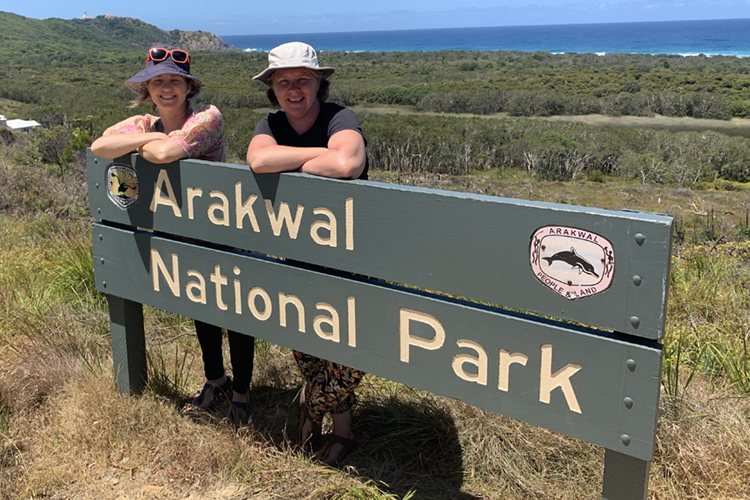
We organised goals according to the three important pillars that underpin the Arakwal National Park management plan:
- looking after Country
- using Country
- knowing about Country.
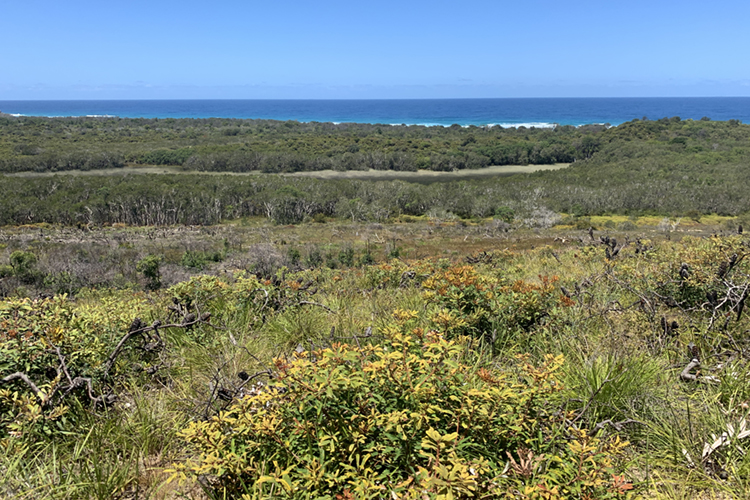
Landscape burning
There was much to celebrate when Arakwal joint managers undertook the first landscape burning in the clay heath habitat in over 30 years in 2018. Traditional Owners, park managers and neighbours were all involved in decisions about when and where to burn. The Threatened Species Recovery Hub also supported Arakwal Rangers to attend the National Indigenous Fire workshop in 2018 to learn about other cultural burning partnerships and approaches happening around the country and to share their experiences.
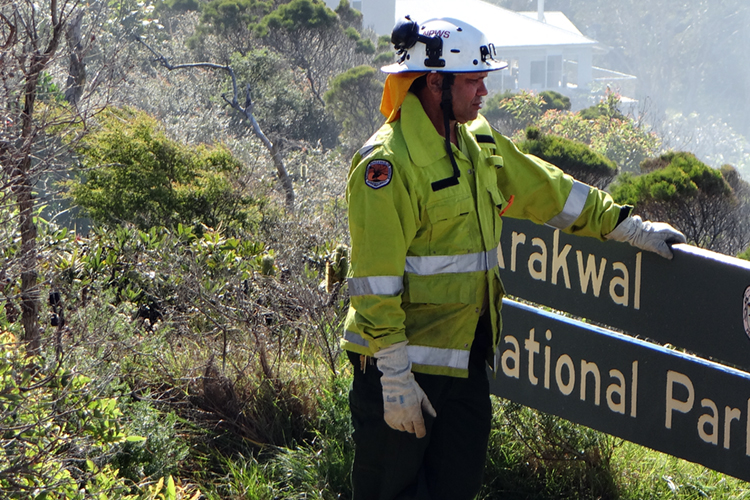
Aniba Kay, Senior Field Officer, NPWS, pausing to rest during the heath burn.A successful collaboration. Photo: Norman Graham
Effective and appropriate management, which includes monitoring and evaluation to ensure actions were working.
Senior Arakwal Traditional Owner Norman Graham aptly described the benefits this work had for Arakwal people and joint managers of this unique protected area when accepting a CSIRO medal for these efforts in 2018: “We worked together to build the knowledge, agree on the actions and assess how we want to care for the Byron Bay orchid and our country.”
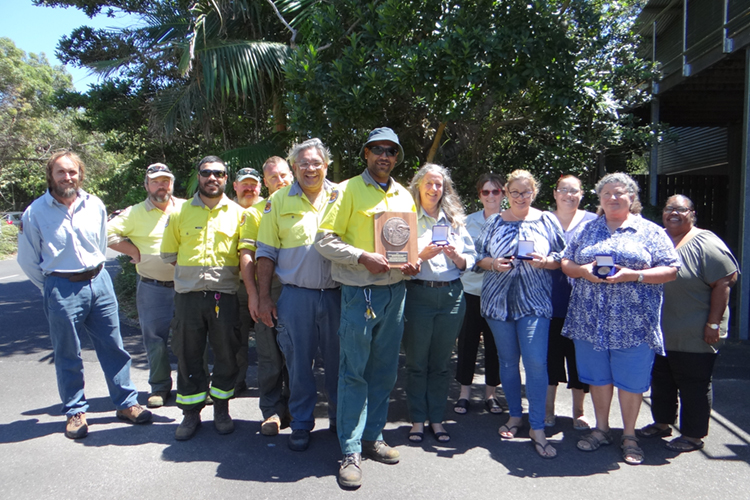
This Threatened Species Recovery Hub project is a collaboration between the Arakwal people of Byron Bay, the New South Wales National Parks and Wildlife Service and CSIRO. It is supported by the Australian Government’s National Environmental Science Program.
Top image: Flowers of the Byron Bay orchid. Photo: Norman Graham
-
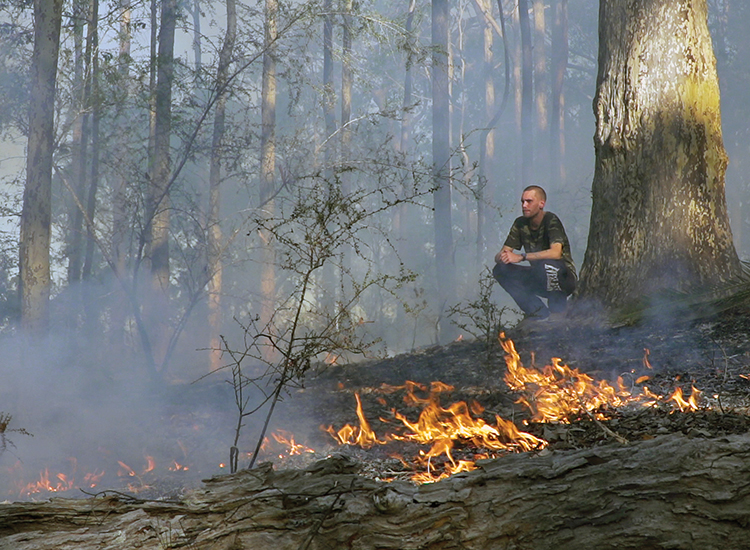
Cultural fire: Listening to and caring for Country with fire
Monday, 31 August 2020 -
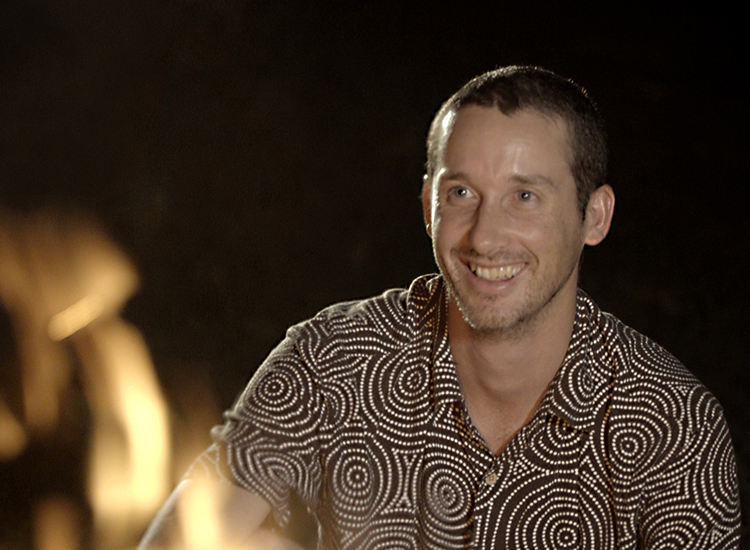
Indigenous advisor profile: Oliver Costello - Healing Country with cultural fire
Wednesday, 02 September 2020 -
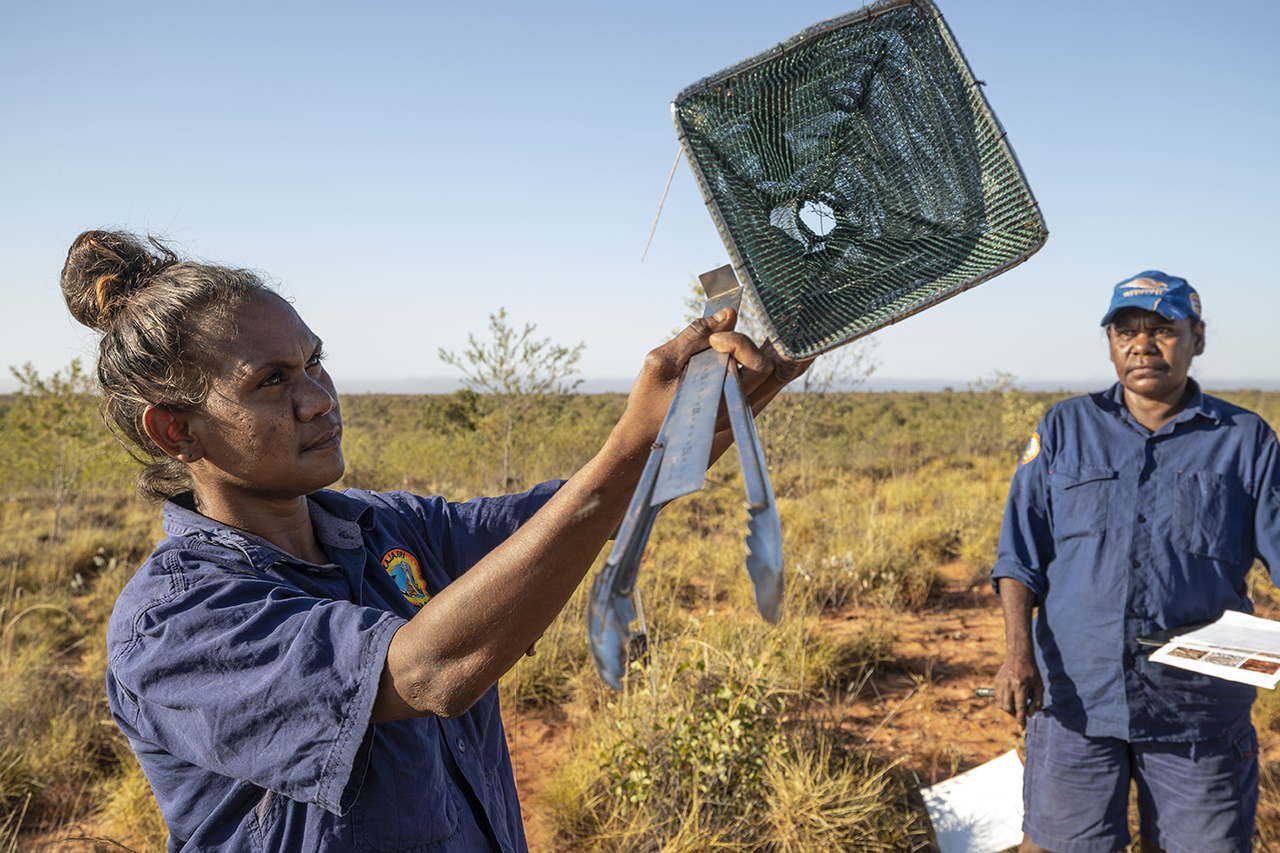
Indigenous Engagement Protocols: Forging respectful, meaningful partnerships for research impact
Wednesday, 21 October 2020 -
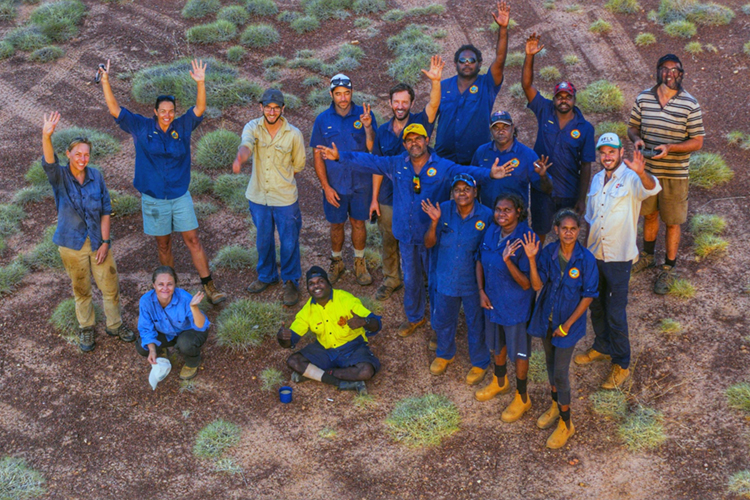
Appeasing Bluetongue Managing fire in the Great Sandy Desert
Tuesday, 13 August 2019 -
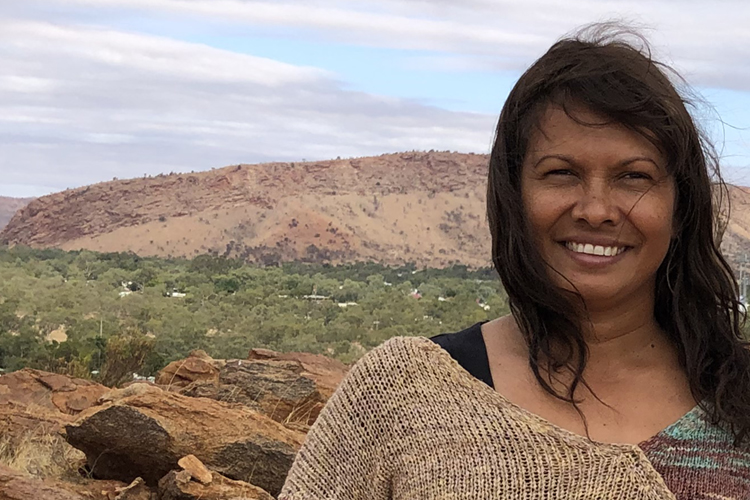
Changing the way research is driven
Tuesday, 13 August 2019 -
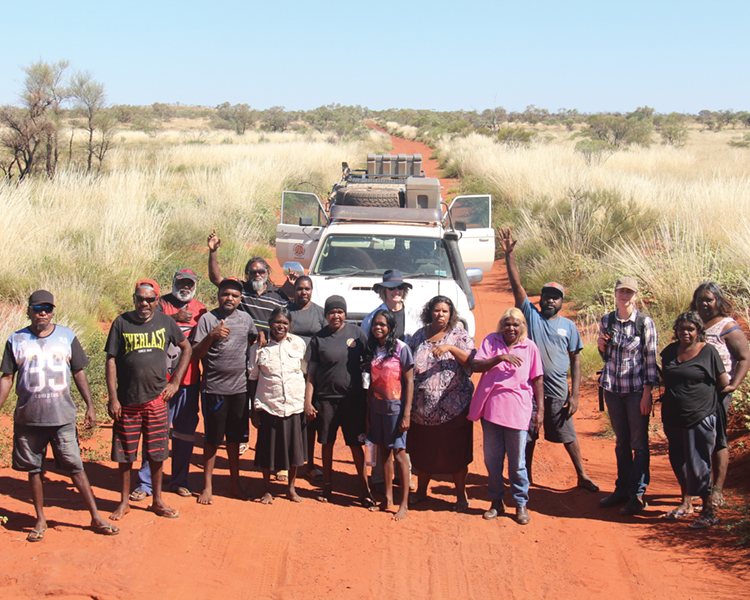
Indigenous engagement vital to saving species
Tuesday, 29 May 2018 -
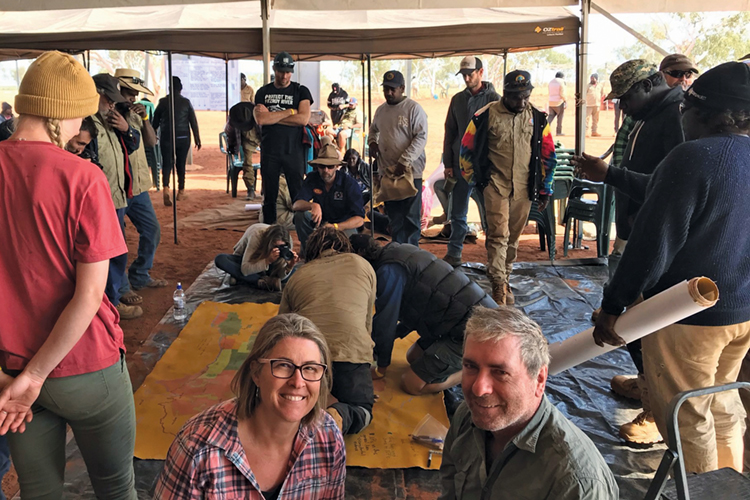
Indigenous people critical for threatened species
Tuesday, 13 August 2019 -
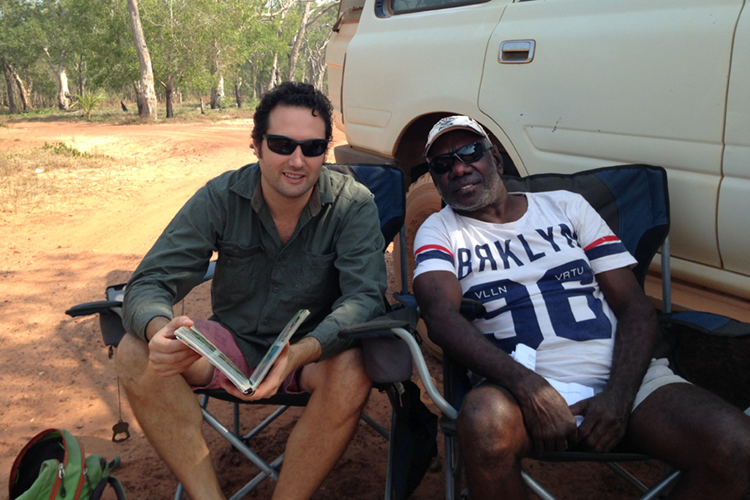
Looking after culturally significant and threatened species on the Tiwi Islands
Tuesday, 20 August 2019 -
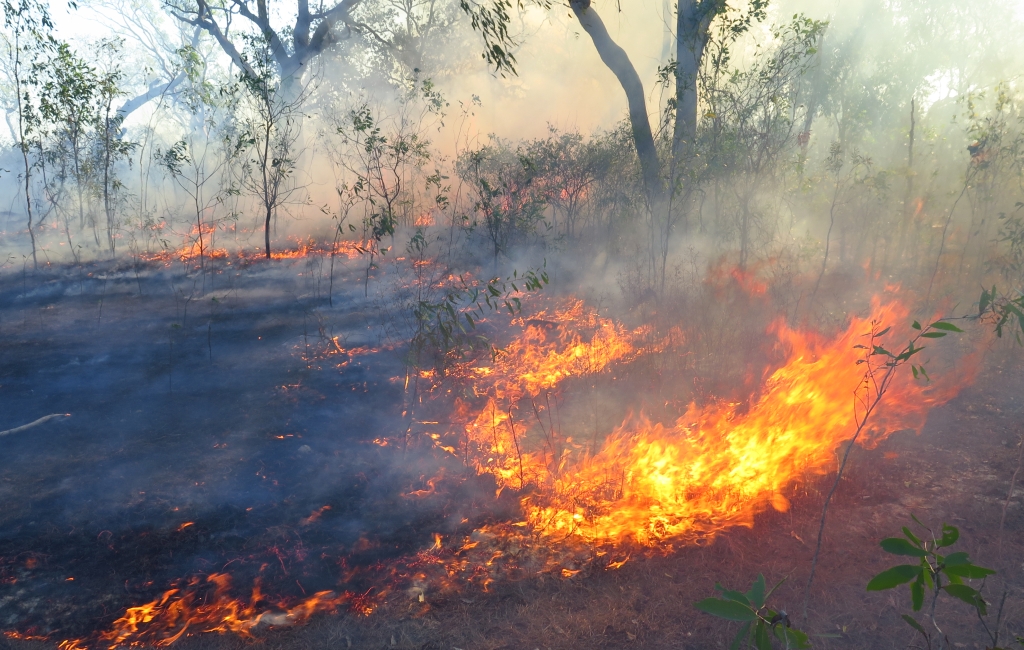
Partnerships with Indigenous communities key for threatened species
Wednesday, 30 March 2016 -
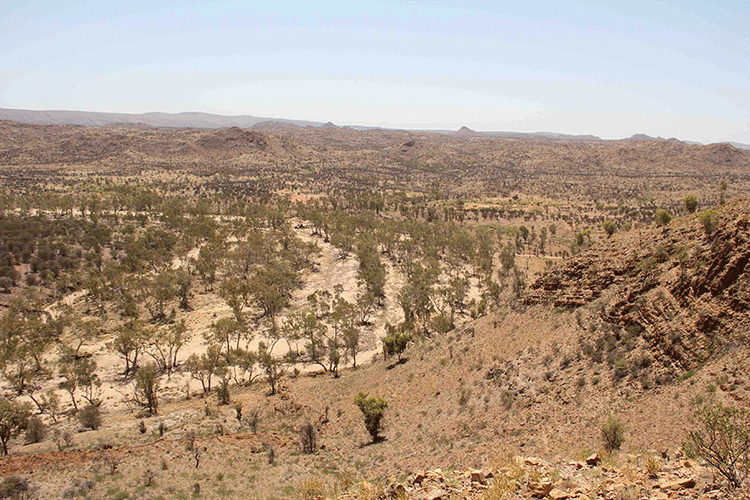
What's the overlap
Wednesday, 07 June 2017 -
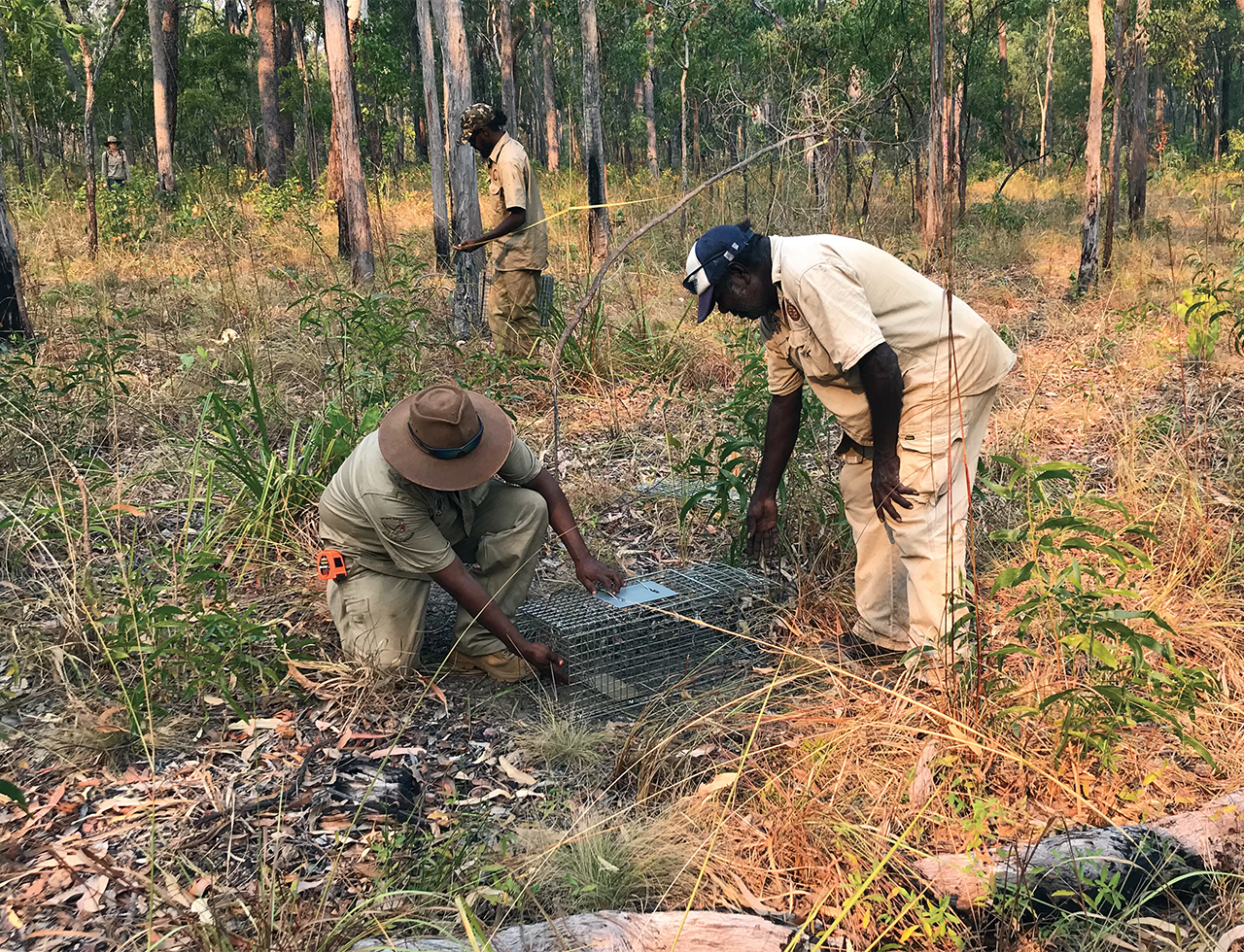
Building collaboration and two-way science
Sunday, 12 December 2021
